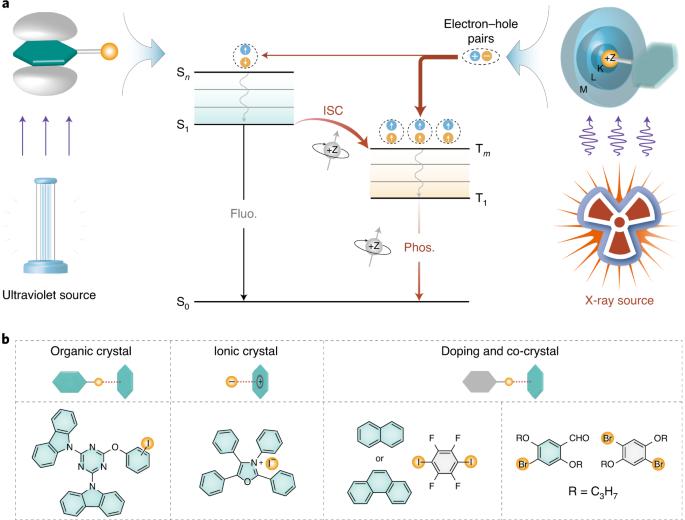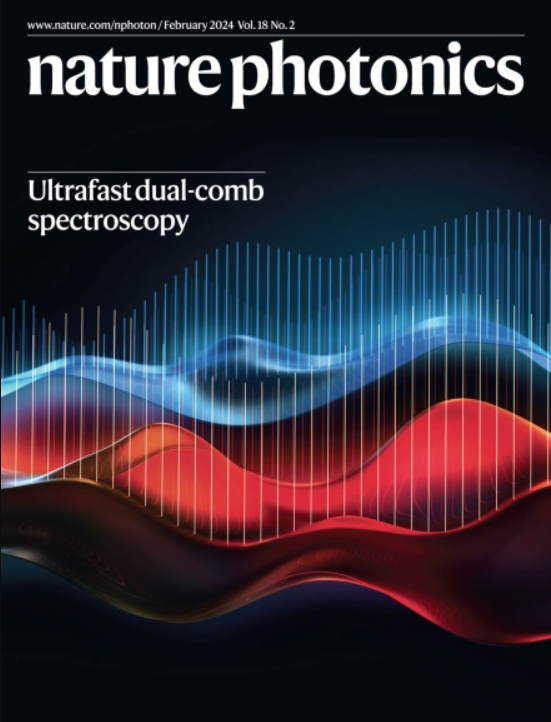Organic phosphors with bright triplet excitons for efficient X-ray-excited luminescence
IF 32.9
1区 物理与天体物理
Q1 OPTICS
引用次数: 144
Abstract
Materials that exhibit X-ray-excited luminescence have great potential in radiation detection, security inspection, biomedical applications and X-ray astronomy1–5. However, high-performance materials are almost exclusively limited to ceramic scintillators, which are typically prepared under high temperatures6. Herein we report metal-free organic phosphors based on a molecular design that supports efficient triplet exciton harvesting to enhance radioluminescence. These organic scintillators exhibit a detection limit of 33 nGy s–1, which is 167 times lower than the standard dosage for X-ray medical examination and we demonstrate their potential application in X-ray radiography. These findings provide a fundamental design principle and new route for the creation of promising alternatives to incumbent inorganic scintillators. Furthermore, they offer new opportunities for development of flexible, stretchable X-ray detectors and imagers for non-destructive radiography testing and medical imaging. Organic, metal-free materials that act as efficient X-ray scintillators could bring new opportunities for X-ray imaging.

具有明亮三重态激子的高效X射线激发发光有机磷光体
显示 X 射线激发发光的材料在辐射探测、安全检查、生物医学应用和 X 射线天文学方面具有巨大潜力1-5。然而,高性能材料几乎仅限于陶瓷闪烁体,而陶瓷闪烁体通常是在高温下制备的6。在此,我们报告了基于分子设计的无金属有机荧光粉,这种设计支持高效的三重激子收集,从而增强了辐射发光。这些有机闪烁体的探测极限为 33 nGy s-1,比 X 射线医学检查的标准剂量低 167 倍,我们证明了它们在 X 射线放射摄影中的潜在应用。这些发现提供了基本的设计原理和新的途径,有助于创造出有前途的无机闪烁体替代品。此外,它们还为开发柔性、可拉伸的 X 射线探测器和成像仪提供了新的机遇,这些探测器和成像仪可用于无损射线照相术测试和医学成像。作为高效 X 射线闪烁体的无金属有机材料可为 X 射线成像带来新的机遇。
本文章由计算机程序翻译,如有差异,请以英文原文为准。
求助全文
约1分钟内获得全文
求助全文
来源期刊

Nature Photonics
物理-光学
CiteScore
54.20
自引率
1.70%
发文量
158
审稿时长
12 months
期刊介绍:
Nature Photonics is a monthly journal dedicated to the scientific study and application of light, known as Photonics. It publishes top-quality, peer-reviewed research across all areas of light generation, manipulation, and detection.
The journal encompasses research into the fundamental properties of light and its interactions with matter, as well as the latest developments in optoelectronic devices and emerging photonics applications. Topics covered include lasers, LEDs, imaging, detectors, optoelectronic devices, quantum optics, biophotonics, optical data storage, spectroscopy, fiber optics, solar energy, displays, terahertz technology, nonlinear optics, plasmonics, nanophotonics, and X-rays.
In addition to research papers and review articles summarizing scientific findings in optoelectronics, Nature Photonics also features News and Views pieces and research highlights. It uniquely includes articles on the business aspects of the industry, such as technology commercialization and market analysis, offering a comprehensive perspective on the field.
 求助内容:
求助内容: 应助结果提醒方式:
应助结果提醒方式:


